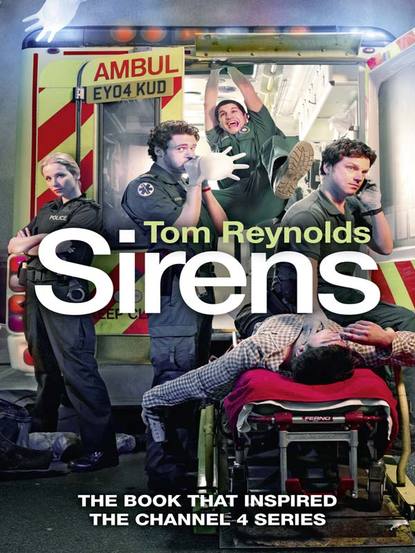По всем вопросам обращайтесь на: info@litportal.ru
(©) 2003-2024.
✖
The Complete Blood, Sweat and Tea
Настройки чтения
Размер шрифта
Высота строк
Поля
Dragging
Sometimes a day can just drag along. Today, due to rather unusual circumstances, the day really dragged. Here is the time-line of today:
10:00 Turn up for work, brew a cup of tea.
10:01 First job of the day, taking someone from Newham hospital to Barts hospital.
10:02 Cut my finger on my locker door, try to stop bleeding, look for plaster.
10:23 Give up search for a plaster – there are none on the station – leave for Newham hospital.
10:26 Arrive at Newham hospital, ask for plaster; they also don’t have a plaster so I now have a huge dressing on my finger.
10:28 Meet with patient, pleasant woman – meet nurse who will be accompanying patient, barely understand nurse because of her inability to speak English.
10:30 Get patient’s notes and read them – they make more sense.
10:32 Ask nurse in charge why this patient (who is having cardiac monitoring and a blood transfusion) is going to an outpatient department. Get told that the patient ‘just is’.
10:54 After packaging the patient on a stretcher, loading them on the back of the ambulance, we set off for Barts hospital.
10:55 Nurse escort tells me that she gets travel sick.
10:55 and 20 seconds Give nurse a vomit bag.
11:37 Arrive at Barts hospital.
11:38 Enter outpatients’ department. Reception seem rather surprised to see patient on stretcher appear in front of them.
11:40 Problem is referred to the sister in charge, she also looks befuddled.
12:00 We wait while sister in charge phones around the hospital trying to work out why this patient is in her outpatient department.
12:30 Still waiting … We let Control know why we are waiting – there is no stretcher/bed to put the patient on.
13:00 Still waiting.
13:30 Still waiting – we let Control know that we still have the patient on our stretcher while they work out what they are going to do with our patient.
14:00 Still waiting.
14:30 Still waiting – we let Control know that we haven’t gone to sleep, we are told by sister in charge that patient will be admitted soon.
14:45 We place patient on an examination bed so that we can go back to answering emergency calls; patient will hopefully be in a hospital bed soon. We leave the nurse escort with the patient.
14:48 We are finally available for another job.
14:49 We realise we have nearly no fuel, and no fuel card to pay for fuel. We decide to return to station to borrow a fuel card off an unused ambulance.
15:20 We arrive back on station to look for fuel card (and have a cup of tea).
15:30 We leave to get fuel. Take infusion pump back to hospital – the ward seem surprised that the patient has been admitted to Barts.
15:48 We have fuel, we are now ready for another job.
16:00 We get a call, out of area Matern-a-taxi.
16:09 Arrive at Matern-a-taxi, contractions (genuinely) every 2 minutes, previous baby born in 3 hours, drive rather quickly towards her booked hospital.
16:12 Patient’s waters break – start swimming in back of ambulance.
16:20 Arrive at hospital.
16:24 Throw patient at midwife, run back to ambulance.
16:30 Tell Control that we need to return to station to mop out the back of the ambulance.
17:20 Get back to station, mop out.
17:45 Crew to relieve us are already on station; await ambulance to dry out.
18:00 Leave for home.
18:37 Get home, collapse into sofa, start writing this post.
- Fin -
This is how you get to work an 8-hour shift, yet only do two jobs …
After this post I got given a box of plasters by a fellow blogger. No more searching around ambulance stations for sticking plasters.
Sedation
I should be working today, but (and I want loads of sympathy here folks) I’m off sick with a work-related injury. Thankfully, it’s nothing too serious, certainly nothing as serious as last time when I swallowed HIV-positive blood.
On Thursday we got called to a big conference centre in town for a (possibly) suspended/dead/fitting male. We rushed over there and were met by their security who had rather cleverly staked out both entrances to this place so that they could lead us to the patient. Parking up we had to climb a couple of flights of stairs carrying nearly all the equipment from the ambulance. Our first-response bag, oxygen and associated kit, defibrillator, suction and carry-chair are quite heavy and, as we were in a rush to get up the stairs, we were a bit out of breath when we reached the patient.
The first thing that we saw (and were very happy about) was that the patient had not suspended, and was instead thrashing around on the floor with some security guards and the centre’s medic sitting on top of him. Approaching closer we saw that he wasn’t fitting, but was instead very combative, trying to fight off the people who were holding him down in a very confused nature. ‘Aha!’ we thought, ‘he’s post-ictal’.
During the post-ictal phase of a seizure, the fitting has stopped, but the patient is often disorientated, sleepy or aggressive. In this case it appeared that the patient was both confused and aggressive – he was not responding to anyone trying to talk to him to calm him down, and he could only make guttural sounds. Normally, these episodes last less than half an hour, so we stay with the patient until we can get them into the ambulance.
Sometimes the aggression can come from physically being held down – the patient is confused and frightened, and all they can feel is people holding them down, so they struggle. I suggested that the security guards let him go, which resulted in the patient trying to stand up, only to fall over again (don’t worry, we caught him) and unfortunately the centre medic got a head butt for his trouble. I managed to get a blood glucose reading, which was normal, and a work colleague phoned the patient’s mother, so I could get a bit of history. The patient is normally fit and healthy, not diagnosed with epilepsy, but has had 2 fits in the past 2 years. All during this phone conversation the mother could hear her son shouting in the background. He had never been violent before.
We resigned ourselves to a bit of a wait, so we managed to get him over to a leather couch, and held him down there. After 10 minutes there was no change in the patient’s condition – normally they get a bit tired or they start to have a change in their condition. So we started to think about other ways in which we could help the patient at the scene. We couldn’t get him to the ambulance while he was so combative, and so we thought he might need some form of sedation. I ran back to the ambulance and asked Control to get us a BASICS doctor, or at least someone who could give some form of sedation.
Instead after about 10–15 minutes we got the PRU (Physician Response Unit), which is a new service where a doctor from the Royal London Hospital covers medical emergency calls – it’s a bit like HEMS, only without the helicopter, and instead of going to trauma they mainly deal with medical emergencies.
The doctor (who is a very nice man) and paramedic crew with him took one look at the patient, listened to the history and decided that sedation was a very good idea.






